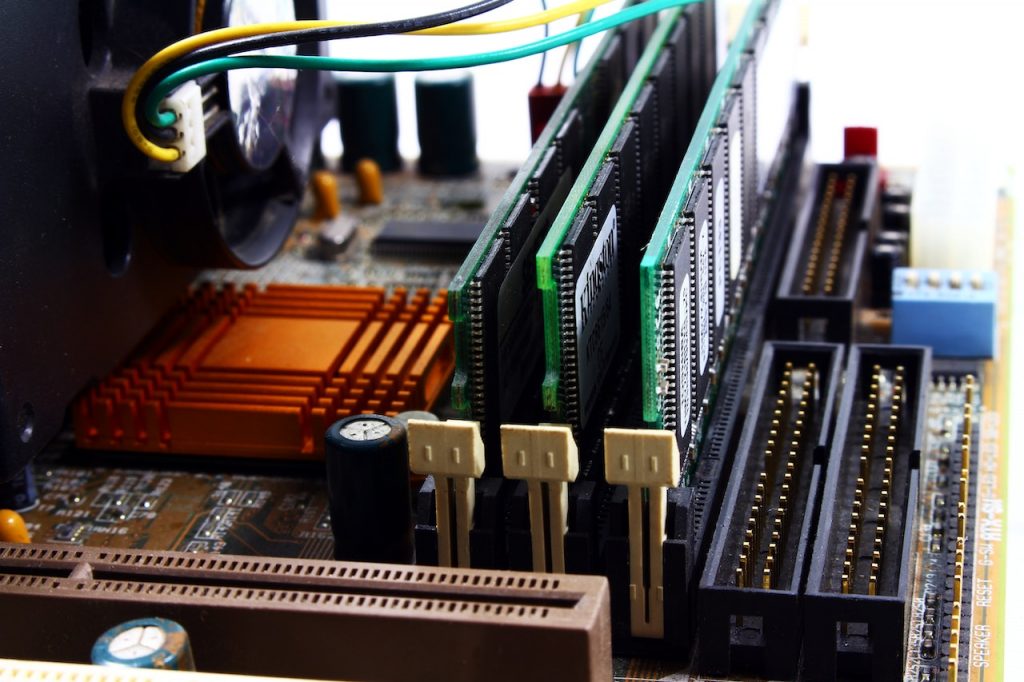
Here is how you can increase RAM on your computer
If you are using an older system with limited RAM, you may experience performance issues. Adding more RAM can improve the overall performance of your system.
There are several ways to increase the amount of RAM on your computer:
- 1. Adding more RAM: You can add more RAM to your computer by purchasing additional RAM modules and installing them in your computer’s RAM slots. It’s vital to ensure that the RAM modules you buy are compatible with your computer’s motherboard.
- Purchasing additional RAM modules for your computer is a simple process:
- Determine your computer’s RAM specifications: Before you purchase additional RAM, you need to determine the type of RAM that is currently installed in your computer. You can check this by looking at your computer’s manual or using software such as CPU-Z or Speccy. You’ll need to know the type of RAM (e.g., DDR4), the speed (e.g., 2400 MHz), and the number of pins (e.g., 288-pin).
- Decide on the amount of RAM you want to purchase: Decide how much RAM you want to add to your computer. It’s important to note that most computers can support up to 16 GB or 32 GB of RAM.
- Research different brands and prices: Research different brands of RAM and compare prices to find the best deal. Some of the most popular RAM brands include Corsair, G.Skill, Kingston, and Crucial.
- Purchase the RAM: Once you have found the RAM that you want to purchase, you can buy it from a variety of retailers such as Amazon, Newegg, Best Buy, Microcenter, and others.
- Install the RAM: Once you have received the RAM, you can install it on your computer by following the instructions in the computer’s manual. Make sure to ground yourself before handling the RAM to prevent static electricity from damaging the RAM.
- It’s important to note that not all RAM is compatible with all motherboards, so make sure to check the compatibility before purchasing additional RAM.
- 2. Upgrading to a larger RAM module: If your computer has an empty RAM slot, you can upgrade to a larger RAM module. This will increase the total amount of RAM in your computer.
- 3. Replacing an existing RAM module: If your computer has multiple RAM slots and one of them is already filled, you can replace the existing RAM module with a larger one.
- 4. Overclocking: Overclocking is the process of making your computer’s components run faster than the manufacturer’s specifications. This can be done with the help of third-party software or by changing the settings in the computer’s BIOS.
- Here are the general steps to overclock by changing the settings in the computer’s BIOS:
- Enter the BIOS: To enter the BIOS, you need to restart your computer and press the key that is displayed on the screen during the boot process (usually Del, F2, or Esc).
- Find the overclocking options: Once you are in the BIOS, you need to navigate to the overclocking options. The location of these options may vary depending on your motherboard and BIOS version, but they are usually found under the “Advanced” or “Overclocking” tab.
- Adjust the settings: Once you have found the overclocking options, you can adjust the settings to overclock your computer. This can include increasing the CPU’s clock speed, increasing the CPU’s voltage, and adjusting the memory timings.
- Save and Exit: Once you have made the necessary changes, you need to save your settings and exit the BIOS. Your computer will then restart and apply the new settings.
- Test you are overclocking: After your computer restarts, you should test your overclock to ensure that it is stable and that your computer is not experiencing any problems. You can use benchmarking and stress-testing software to test your overclock.
- Please note that overclocking can increase the temperature of your components and may void your warranty. It’s essential to monitor the temperature of your CPU and other elements while overclocking and to take necessary precautions to prevent overheating.
- 5. Cloud-based RAM: If you are running a computer with limited RAM, you can utilize cloud-based RAM services to increase the amount of RAM available for your system.
This is a way to increase the amount of RAM available to your computer by using a remote server rather than adding more physical RAM to your computer.
Note: that using cloud-based RAM can be more expensive in the long run than adding more physical RAM to your computer, and it also may require a stable internet connection.
Lastly, before attempting to increase your RAM, it is essential to consult your computer’s manual and/or manufacturer’s website to ensure that your computer can support the additional RAM and that you are aware of any potential risks or issues that may arise from this process.

